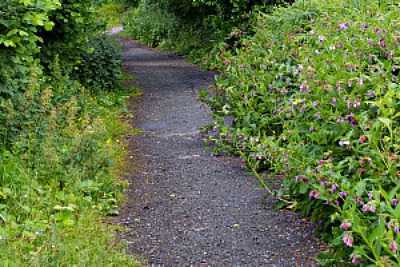The Bee Heaven
On My Doorstep
Today, I have
felt so much love for the area in which I live, I just had to write about it.
As I write,
it’s March 2014. I’ve been for walks with our spaniel along
the country lanes and into the woods, clambering up and down the undulating
banks and along the footpath by the reservoir.
Located along the reservoir are old ruins - reminders of the industrial past of the village in which I live. Indeed, old brownfield sites overgrown with wildflowers and other vegetation, often provide opportunities for wildlife, including pollinators.
In view of the present loveliness of the place, it almost seems a contradiction that the area was once an important industrial hub for the local communities.
Cotton, paper, flour and copper mills, factories, and furnaces could all be found here, producing goods that were shipped to locations throughout the world.
At one time, the scenery must surely have included smoke and grime, but now…… it is wildlife heaven.
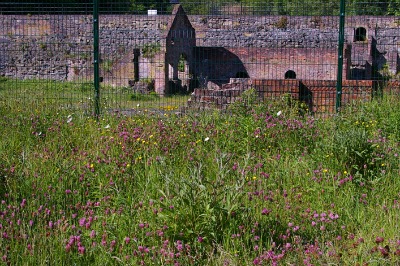
The photograph above was taken by the old industrial ruins. Clover, knapweed, buttercups, bird's foot trefoil, and more, all provide food for bees.
But anyway,
every day I am reminded, as I walk with our lovely spaniel, of just how lucky I
am!
It’s early spring, but I am seeing quite a lot of queen bumble bees around.
There are the remains of a rail track, flanked by old stone walls. The walls are covered in native ivy and wildflowers as well as mosses.
Wall crevices provide ideal shelter for all kinds of insects or indeed, other creatures, such as small reptiles.
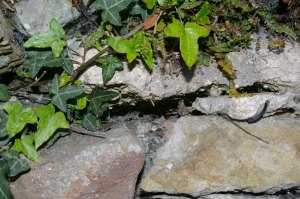
Bumble bees will appreciate the crevices in the stonework, as well as any old rodent holes. Indeed, when I ventured down the lane with our spaniel, I realized I had come across yet another haven for bees, and sure enough, I saw several bumble bee queens prospecting for nest sites.
Solitary bees will find a home in the hollow plant stems, or even small holes in tree trunks.
They might also find homes in the old stone walls.
Honey bee colonies could find refuge in some of the hollow tree trunks
in the woods.
There are old mixed hedgerows: hawthorns, honeysuckle, brambles, holly, and interspersed with the occasional small tree or shrub.
All of these provide excellent opportunities for bees of various species, to find nests, as well as wonderful food sources for bees.
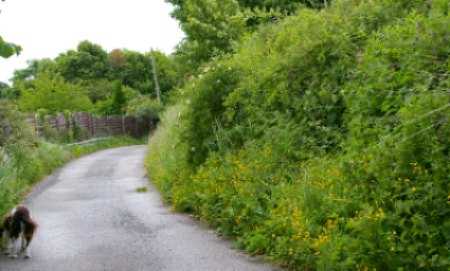
Pussy willow, rosebay willowherb, red dead nettle, hawthorne, lesser celandine, wild garlic, dandelions and buttercups are followed by a large swathe of comfrey and teasels, plus more dandelions and buttercups, brambles and wild roses.
A little further down the lane....more comfrey, dandelions, buttercups, brambles and wild roses.
There's also knapweed, forget-me-nots, deadnettles and clover. The wild, rugged growth is home to bee and wasp nests.
Then there's more bee heaven in the bluebell woods! Also to be found in various parts of the woodland are wood anemones and wild garlic.
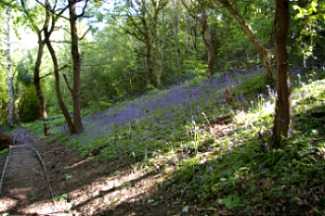
It's so easy to become attached to places like this, especially when I love bees, as I do!
Create a
lawn for bees
If you found this page helpful or interesting, I'd really be grateful if you would share it with others - if not this page, perhaps another, such as Gardening For Bees.
Thank you so much :) .
